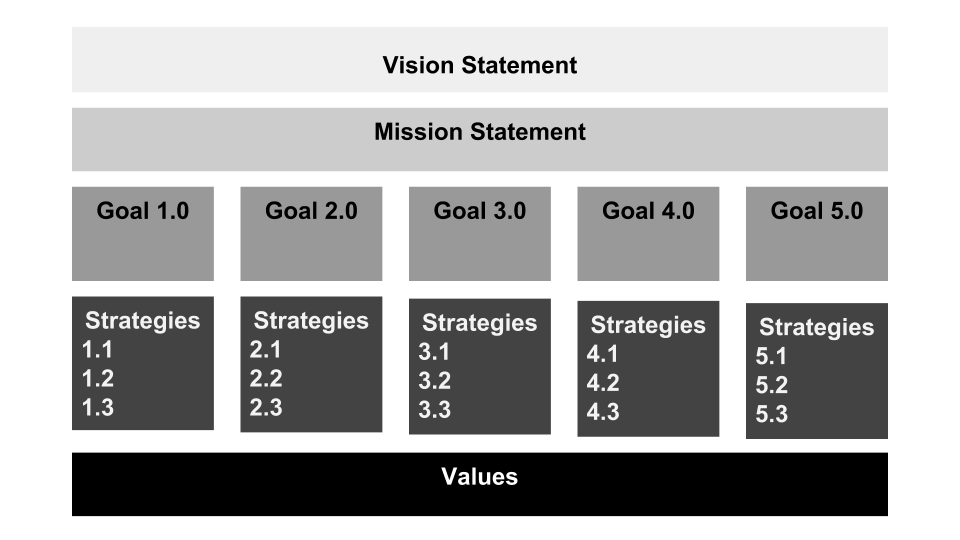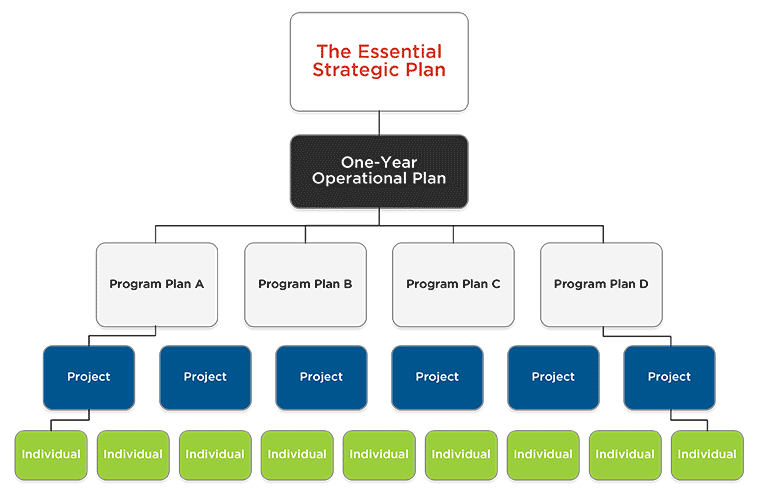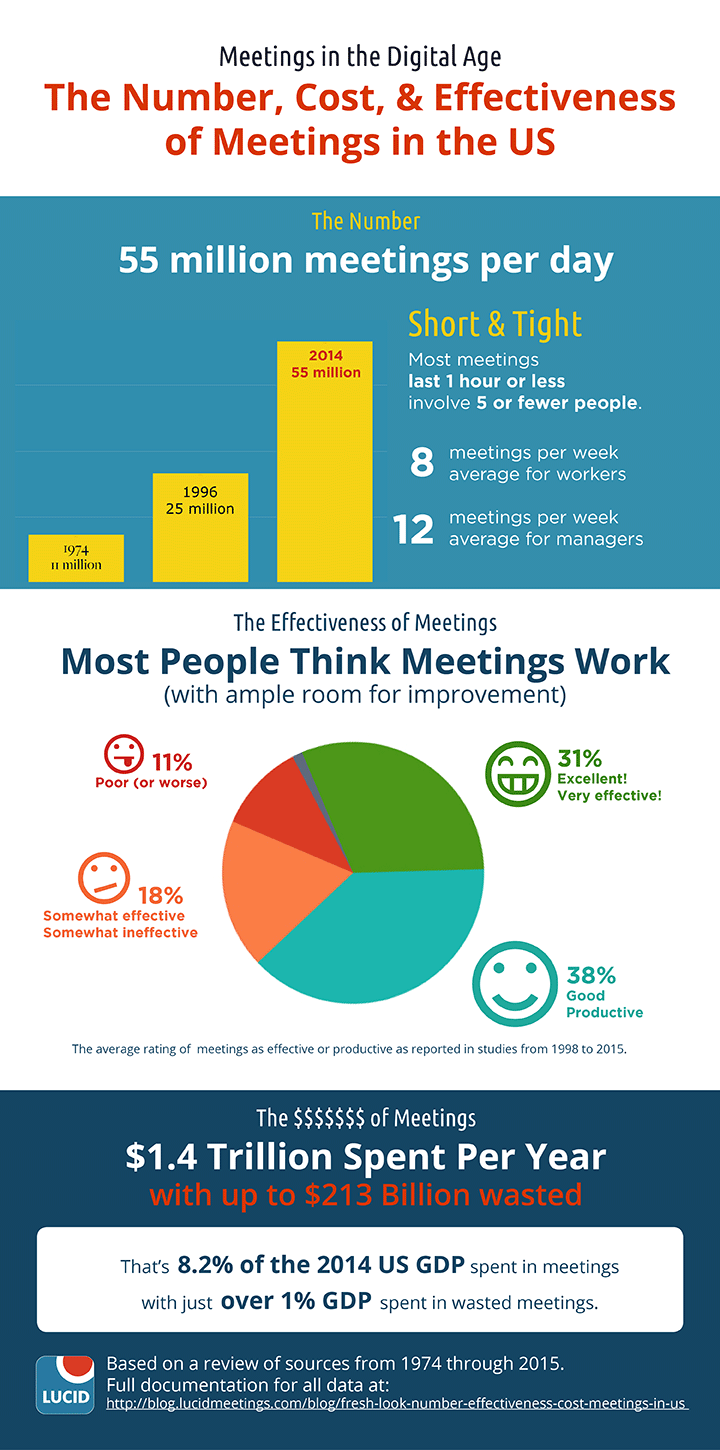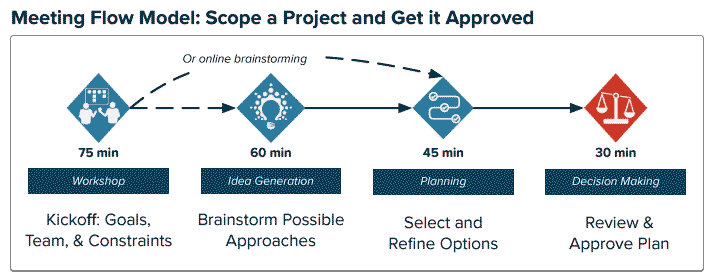Strategic Planning with Remote Teams Part 5: Goals & Strategies
Once you have an established vision and mission, it’s time to figure out exactly what you’ll do to achieve them. The Complete Toolkit for Strategic Planning with Remote Teams breaks this work into two sessions. In the first, the team establishes a series of high-level goals, and in the second, they define the specific strategies they’ll employ to achieve these goals.
The information that follows is an excerpt from Anna O’Byrne’s detailed Guide that accompanies these templates.
How Goals & Strategies Fit in the Essential Strategic Plan
The Essential Strategic Plan is concerned with what you want to achieve – your “ends” – and how you’ll attain these ends, at a high-level. The “essentials” covered in this series of meetings make up the core of your strategic direction.
- The vision, mission and values define your organizational identity; your very brand. They become the filter through which you evaluate new opportunities, and can drive day-to-day decisions.
- Goals and strategies define where you’ll focus energy and resources.

True to its name, the Essential Strategic Plan covers the basics; a minimal but fully functional strategic plan. Depending on your organization, you may wish to plan to a finer level of detail. For example, you might break down broad strategies into more discrete tactics. Tactics are actionable steps towards achieving your goals. You can also break down goals into specific, measurable objectives. Then, as you define measures, you can capture these in a scorecard to monitor your progress.
Setting Strategic Goals
During the goal-setting meeting in the Essential Strategic Plan series, you will need to set the time horizon for your mid-term goals. Generally, organizations set strategic goals with a one to five year expiry date. If your strategic plan sets out a three or a five year plan, what should you do in the coming year? In the coming month?
During the strategic goal-setting meeting, teams work to agree on typically three to five goals. To land on strong strategic goals, you need to spend time looking at the landscape in which you operate. You may even need to gather data.
A vision, mission and values may serve an organization for decades or more. Strategic goals are shorter-lived. Goals can serve an organization for a one year period, or more typically, up to five years. Strategic goals are important because they:
- Provide stepping stones towards achieving your vision;
- Bring focus to everyday work;
- Support effective decision making, especially around how time and resources will be assigned.
Improve Your Skills with Meeting School
Tips for Goal Setting
During the goal-setting meeting, focus on finding the answers to these questions:
- What achievements or strengths do we want to build on?
- What weaknesses or risks do we need to address/remedy?
- What new opportunities should we pursue?
You may find that people slip into discussing questions of what needs to be done. The challenge will be to shift the thinking toward ends.
Ask the question, “To what end?” repeatedly, and you will create better goals.
Defining Strategies
For each goal that you have set, you will generate a set of strategies. Strategies define how you will achieve your goals; they articulate your broad courses of action for goal attainment.
For example, if one of your goals is to generate more revenue, you may have three or more strategies for marketing, e.g. social media marketing, direct marketing, advertising. Your strategy session, like your goal-setting session, may be one of your longer strategic planning sessions. It takes some time to set unique strategies for each goal.
Tips for Establishing Strategies
Facilitate the brainstorming so that the group comes up with answers to these questions for each goal on your plan:
- How can we achieve this goal?
- What course of action would enable us to attain this goal?
Based on your organization’s current situation, it can also help to ask:
- What do we need to have before we can successfully achieve this goal?
How can we best get that? - What’s standing in our way of achieving this goal?
What do we need to do to clear those barriers?
Using the Essential Strategic Plan to Guide Near-Term Planning
Picture planning like a pyramid. At the top, you have your Essential Strategic Plan: it’s distant, and it’s lean. At each successive level below, your plans become nearer-term and more detailed.

For example, right below your Essential Strategic Plan you may have a one-year operational plan. Your operational plan sets out the steps you’ll take in the coming year to achieve your strategic goals. Below the operational plan, you may have program plans, project plans, and individual performance plans.
Use the Essential Strategic Plan to keep each layer of planning aligned, coherent, and fixed on the same long-term intentions.



